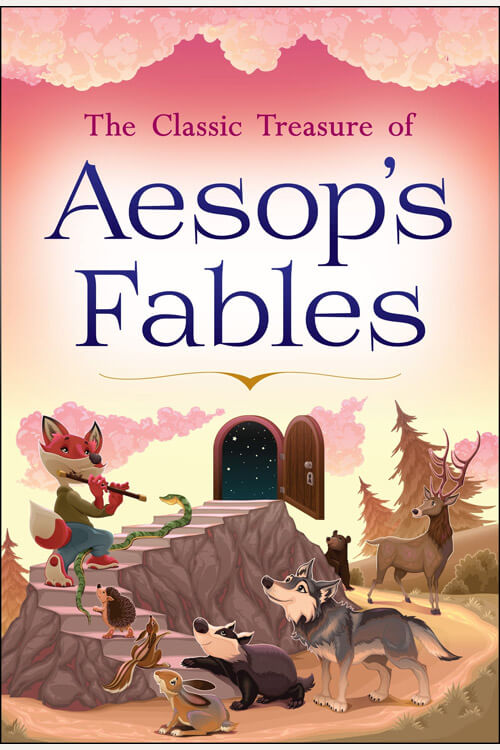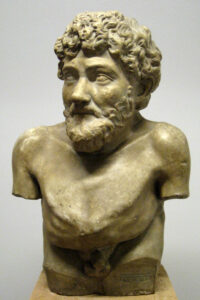
Aesop’s Fables
Aesop’s Fables, or the Aesopica, is a collection of fables credited to Aesop, a slave and storyteller who lived in ancient Greece between 620 and 564 BCE. Of diverse origins, the stories associated with his name have descended to modern times through several sources and continue to be reinterpreted in different verbal registers and famous and artistic media. The fables originally belonged to oral tradition and were not collected for three centuries after Aesop’s death. By that time, various other stories, jokes, and proverbs were being ascribed to him, although some of that material was from sources earlier than him or came from beyond the Greek cultural sphere. The inclusion process has continued until now, with some of the fables unrecorded before the Late Middle Ages and others arriving from outside Europe.
The process is continuous, and new stories are still being added to the Aesop corpus, even when they are demonstrably more recent works and sometimes from known authors. Manuscripts in Latin and Greek were important avenues of transmission, although poetical treatments in European vernaculars eventually formed another. On the arrival of printing, collections of Aesop’s fables were among the earliest books in various languages. Through later collections and translations or adaptations of them, Aesop’s reputation as a fabulist was transmitted throughout the world. Initially, the fables were addressed to adults and covered religious, social, and political themes. They were also used as ethical guides and, from the Renaissance onwards, were used primarily for children’s education. Their ethical dimension was reinforced in the adult world through depiction in sculpture, painting, and other illustrative means, as well as adaptation to drama and song. In addition, there have been reinterpretations of the meaning of fables and changes in emphasis over time.
Read or download Book
Aesop
Aesop ( c. 620–564 BCE; formerly rendered as Æsop) was a Greek fabulist and storyteller credited with several fables now collectively known as Aesop’s Fables.
Biography
Although his existence remains unclear and no writings by him survive, numerous tales credited to him were gathered across the centuries and in many languages in a storytelling tradition that continues to this day. Anthropomorphic animal characters characterize many of the stories associated with him. Scattered details of Aesop’s life can be found in ancient sources, including Aristotle, Herodotus, and Plutarch. An ancient literary work called The Aesop Romance tells an episodic, probably highly fictional version of his life, including the traditional description of him as a strikingly ugly slave (δοῦλος) who by his cleverness acquires freedom and becomes an adviser to kings and city-states. Older spellings of his name have included Esop(e) and Isope.
Depictions of Aesop in popular culture over the last 2,500 years have included many works of art and his appearance as a character in numerous books, films, plays, and television programs. Along with the scattered references in the ancient sources regarding the life and death of Aesop, there is a highly fictional biography now commonly called The Aesop Romance (also known as the Vita or The Life of Aesop or The Book of Xanthus the Philosopher and Aesop His Slave), “an anonymous work of Greek popular literature composed around the second century of our era … Like The Alexander Romance, The Aesop Romance became a folkbook, a work that belonged to no one, and the occasional writer felt free to modify as it might suit him.” Multiple, sometimes contradictory, versions of this work exist. The earliest known version was probably composed in the 1st century CE. Still, the story may have circulated in different versions for centuries before it was committed to writing, and certain elements can be shown to originate in the 4th century BCE.
Scholars have long dismissed any historical or biographical validity in The Aesop Romance; widespread study of the work began only toward the end of the 20th century. In The Aesop Romance, Aesop is an extremely ugly slave of Phrygian origin on the island of Samos. At first, he lacks the power of speech. Still, after showing kindness to a priestess of Isis, he is granted by the goddess not only speech but a gift for clever storytelling, which he uses alternately to assist and confound his master, Xanthus, embarrassing the philosopher in front of his students and even sleeping with his wife. After interpreting a warning for the people of Samos, Aesop is given his freedom and acts as an emissary between the Samians and King Croesus. Later, he travels to the courts of Lycurgus of Babylon and Nectanabo of Egypt – both imaginary rulers – in a section that appears to borrow heavily from the romance of Ahiqar. The story ends with Aesop’s journey to Delphi, where he angers the citizens by telling insulting fables, is sentenced to death, and, after cursing the people of Delphi, is forced to jump to his death.






